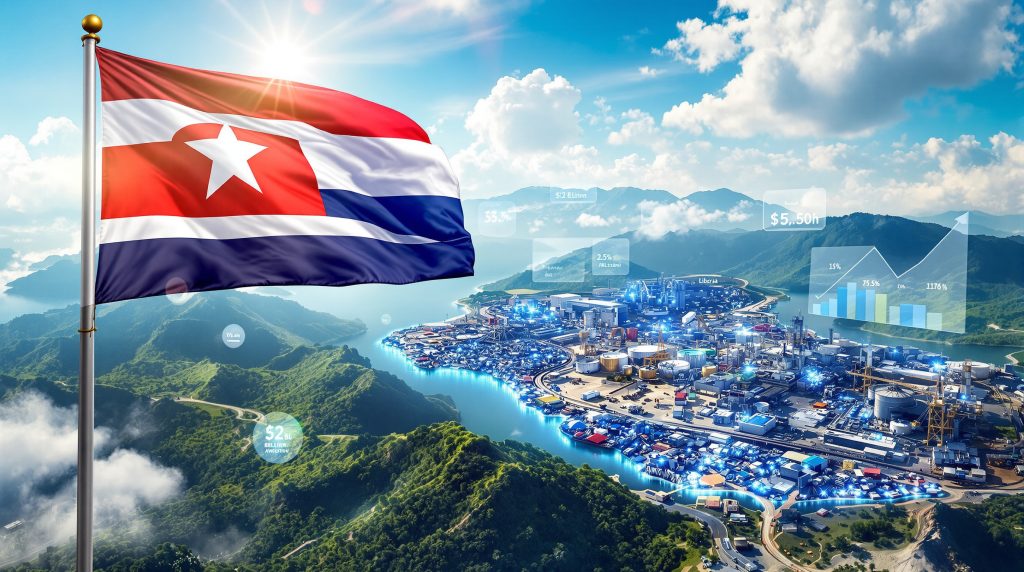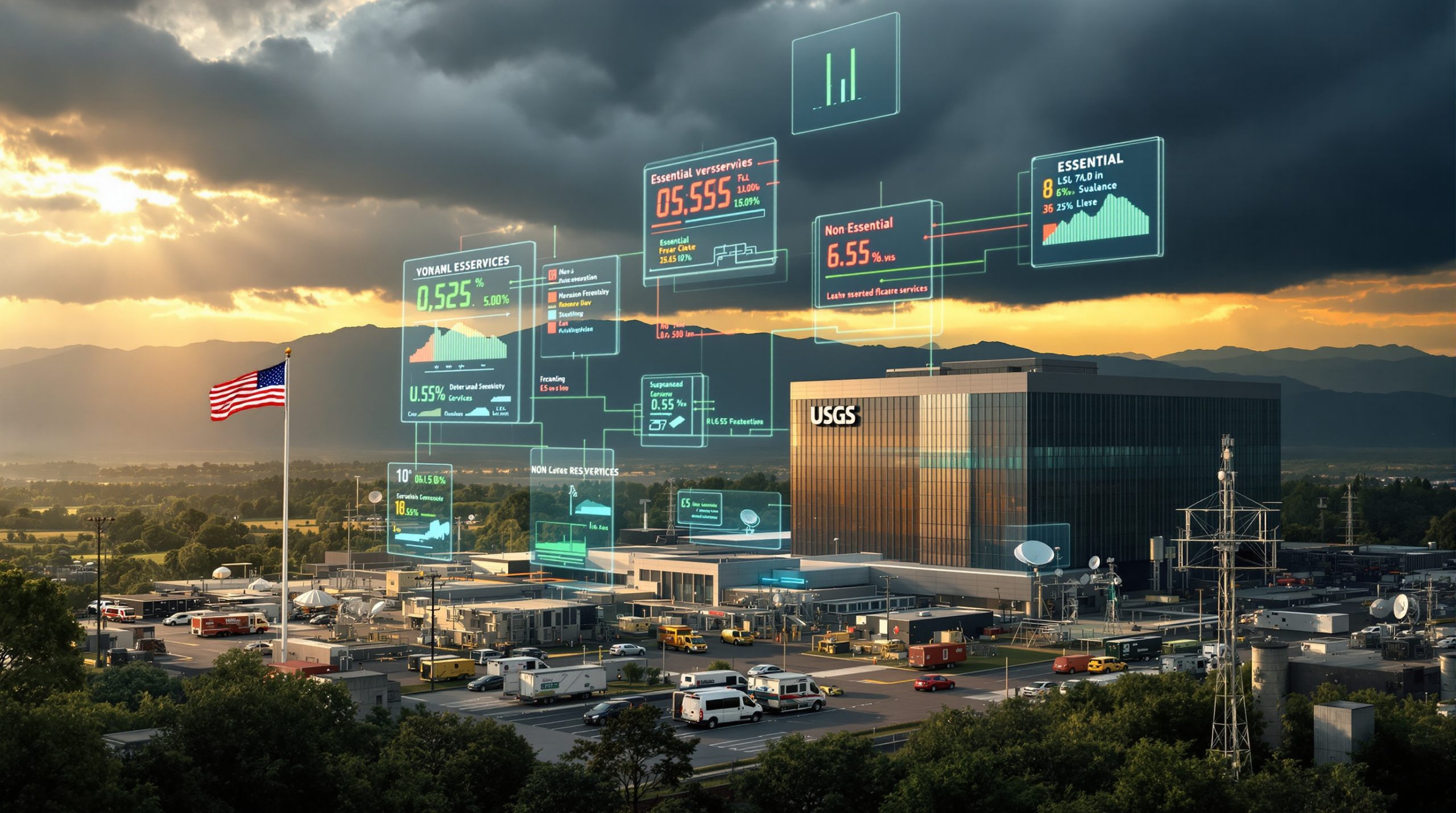Understanding Liberia's Strategic Mineral Landscape
Recent diplomatic developments signal a significant shift in U.S.-Africa mineral partnerships, with Secretary of State Marco Rubio meeting Liberian Foreign Minister Sara Beysolow Nyanti in Washington on October 16, 2025, to explore expanding American participation in West Africa's critical minerals sector. This high-level engagement represents the latest chapter in boosting US participation in Liberia's critical minerals sector, marking a strategic pivot toward diversifying America's supply chains away from traditional dependencies. Furthermore, this initiative aligns with broader critical minerals energy transition goals that are reshaping global supply chain strategies.
Liberia's geological landscape presents compelling opportunities for international mining investment, though the full extent of these resources requires comprehensive assessment. The country's mineral endowment includes potential deposits of lithium, copper, iron ore, and gold, positioned within the broader West African geological formations that have yielded significant discoveries across the region.
Geographic Distribution and Resource Assessment
The mineral wealth appears concentrated in several key regions across Liberian territory, though detailed geological surveys remain ongoing. Northwestern counties show particular promise for copper and gold deposits, while central regions may contain lithium-bearing formations similar to those found in neighboring Guinea and Mali.
Current exploration activities involve both artisanal mining operations and small-scale commercial ventures, indicating the presence of economically viable mineral concentrations. However, large-scale resource quantification awaits systematic geological mapping and feasibility studies that could support major international investment commitments.
Key Factors Driving Investment Interest:
• Proximity to established West African mining corridors
• Geological formations consistent with critical mineral deposits
• Existing mining infrastructure that can be upgraded and expanded
• Government commitment to international partnership development
What Makes Liberia Attractive for U.S. Mining Investment?
The October 2025 diplomatic engagement between American and Liberian leadership demonstrates the strategic importance both nations place on mineral sector cooperation. State Department spokesperson Tommy Pigott confirmed that discussions focused on creating jobs and economic growth in both countries, indicating government-level support for bilateral mining ventures. Additionally, this cooperation supports African countries' role in U.S. critical minerals supply chains.
Historical Foundations for Partnership
U.S.-Liberia relations date back over 175 years, creating a foundation of diplomatic trust that facilitates complex commercial arrangements. This historical connection provides American companies with established diplomatic channels and cultural familiarity that can accelerate investment negotiations and operational setup.
Political Stability Considerations:
Liberia's democratic institutions have strengthened significantly since 2003, creating an environment conducive to long-term mining investments. The country's commitment to transparent governance and rule of law provides investors with confidence in contract enforcement and property rights protection.
Regulatory Framework Advantages
The Liberian government has implemented mining sector reforms designed to attract international investment while ensuring local benefit sharing. Recent legislative updates include:
• Streamlined permitting processes for exploration and development
• Transparent bidding systems for mineral rights allocation
• Community development requirements built into mining agreements
• Environmental protection standards aligned with international best practices
Infrastructure Development Potential:
Unlike some regional competitors, Liberia offers existing port facilities at Monrovia and Buchanan that can support mineral exports with relatively modest upgrades. The country's road network, while requiring improvement, provides basic connectivity between potential mining sites and transportation hubs.
The combination of government support, regulatory transparency, and existing infrastructure creates a more favorable investment climate than many other West African destinations, particularly for American companies seeking reliable partnerships in critical minerals development.
Which Critical Minerals Offer the Greatest Opportunities?
The strategic focus on boosting US participation in Liberia's critical minerals sector centers on several key commodities essential to American manufacturing and defence capabilities. Each mineral presents distinct opportunities and challenges for potential investors and bilateral cooperation frameworks.
Lithium Deposits and Battery Supply Chain Integration
Preliminary geological assessments suggest lithium-bearing pegmatite formations exist in Liberia's crystalline basement rocks, similar to successful deposits discovered across West Africa's lithium belt. These formations typically contain spodumene and lepidolite minerals that can be processed into battery-grade lithium carbonate.
Market Context:
U.S. electric vehicle manufacturing goals require secure lithium supply chains independent of geopolitically sensitive regions. Liberian lithium development could support American battery manufacturers while reducing reliance on imports from countries with unstable trade relationships.
Processing Infrastructure Opportunities:
• Concentration facilities near mining sites to reduce transportation costs
• Chemical processing plants for lithium carbonate production
• Quality control laboratories ensuring battery-grade specifications
• Export terminals designed for lithium compound shipments
Copper Resources for Infrastructure Development
Copper mineralisation in Liberia appears associated with volcanic massive sulfide deposits and sediment-hosted formations that have proven economically viable in similar geological settings across West Africa. Initial exploration indicates potential for both high-grade underground deposits and lower-grade open-pit resources. This development could significantly benefit from advanced copper investment strategies that have proven successful in similar regional projects.
Strategic Importance for U.S. Markets:
American renewable energy infrastructure requires substantial copper inputs for wind turbine generators, solar panel connections, and electric grid upgrades. Liberian copper development could supply domestic infrastructure projects while creating export revenue for both nations.
Iron Ore Legacy and Modernisation Potential
Liberia's iron ore sector, historically the country's largest mineral export, presents opportunities for modernisation and expansion using advanced extraction and processing technologies. Existing mining areas contain additional reserves that could support renewed large-scale operations.
Technology Transfer Opportunities:
American mining technology companies could introduce automated extraction systems, advanced beneficiation processes, and environmental management technologies that increase efficiency while meeting international sustainability standards.
How Can U.S. Companies Navigate Investment Entry Strategies?
The diplomatic foundation established through the Rubio-Nyanti meeting creates a framework for American companies to explore systematic entry into Liberian critical minerals development. Success requires understanding both bilateral government initiatives and practical investment mechanisms. Moreover, companies should consider how mining industry innovation is transforming operational approaches across West Africa.
Bilateral Investment Framework Development
The high-level diplomatic engagement signals potential for comprehensive bilateral investment treaties that could provide American companies with enhanced legal protections and dispute resolution mechanisms. Such frameworks typically include:
Investment Protection Protocols:
• Expropriation protection ensuring compensation for government takings
• Currency convertibility guarantees for profit repatriation
• National treatment provisions preventing discrimination against foreign investors
• Dispute arbitration mechanisms through international commercial courts
Public-Private Partnership Models
U.S. development finance institutions offer risk mitigation tools specifically designed for critical minerals investments in developing countries. These mechanisms can significantly reduce investment risk while supporting American strategic objectives.
Available Financing Mechanisms:
| Institution | Programme Type | Coverage Amount | Risk Mitigation |
|---|---|---|---|
| U.S. DFC | Political Risk Insurance | Up to $1 billion | Government action protection |
| Export-Import Bank | Equipment Financing | Project-specific | Technology export support |
| USTDA | Feasibility Studies | $2 million typical | Pre-investment analysis |
Technology Transfer Incentive Structures:
American companies can leverage technical assistance programmes that provide funding for equipment demonstrations, workforce training, and operational setup while building long-term commercial relationships with Liberian partners.
Risk Assessment and Mitigation Planning
Successful investment entry requires comprehensive due diligence covering geological, political, regulatory, and operational factors. Companies should conduct:
• Independent geological assessments verifying mineral resource estimates
• Environmental impact evaluations ensuring compliance with international standards
• Community engagement strategies building local support for mining operations
• Supply chain logistics analysis confirming export route viability
What Infrastructure Investments Support Mining Operations?
Critical minerals development in Liberia requires coordinated infrastructure improvements that benefit both mining operations and broader economic development. The country's existing infrastructure provides a foundation for expansion rather than complete reconstruction. In addition, these developments could particularly benefit junior mining investments seeking to establish operations in emerging markets.
Transportation Network Modernisation
Liberia's transportation infrastructure includes functioning port facilities and basic road networks that can support mineral extraction with targeted upgrades. The key requirements involve capacity expansion and efficiency improvements rather than entirely new construction.
Railway Rehabilitation Projects:
Historical iron ore operations utilised narrow-gauge railway systems connecting mining areas to port facilities. These rail corridors could be rehabilitated and expanded to support multiple commodity shipments, reducing transportation costs and environmental impact compared to road transport.
Port Facility Enhancement:
• Monrovia Port expansion for containerised mineral shipments
• Buchanan Port rehabilitation for bulk commodity handling
• Specialised loading equipment for different mineral types
• Storage facilities providing weather protection and quality control
Power Generation and Grid Expansion
Mining operations require reliable electricity supply for processing facilities, equipment operation, and supporting infrastructure. Liberia's current power generation capacity needs substantial expansion to support industrial-scale mining development.
Renewable Energy Integration:
The country's tropical climate and river systems provide opportunities for hydroelectric and solar power development that can supply mining operations while contributing to national electrification goals.
Grid Reliability Improvements:
• Transmission line construction connecting mining areas to power sources
• Backup power systems ensuring continuous mining operations
• Grid stability infrastructure managing industrial load fluctuations
• Rural electrification expansion benefiting mining-adjacent communities
Water Resource Management
Critical minerals processing requires substantial water inputs for mineral separation, dust control, and facility operations. Liberia's abundant rainfall and river systems provide adequate water resources with proper management systems.
Water Infrastructure Requirements:
Mining operations need water treatment facilities, distribution systems, and recycling technologies that minimise environmental impact while ensuring operational efficiency. American water management companies could provide advanced technologies for sustainable water use.
How Does This Fit Into Broader U.S. Strategic Objectives?
Boosting US participation in Liberia's critical minerals sector represents a key component of America's broader strategy to secure reliable supply chains for materials essential to economic competitiveness and national security. This initiative aligns with multiple strategic priorities established by U.S. policymakers. Furthermore, emerging technologies like AI mining efficiency solutions are expected to play a crucial role in optimising these operations.
Supply Chain Diversification Goals
Current American critical minerals imports demonstrate concerning dependencies on single-source suppliers, particularly for materials essential to defence applications, renewable energy systems, and advanced manufacturing. Liberian partnerships offer geographic and political diversification that strengthens supply chain resilience.
Critical Dependencies Requiring Diversification:
• Lithium imports currently dominated by South American and Australian sources
• Copper supplies increasingly concentrated in politically unstable regions
• Processing capabilities heavily reliant on Chinese refining facilities
• Transportation routes vulnerable to geopolitical disruptions
Building Resilient Supply Networks
The U.S. approach emphasises allied and partner nation cooperation in critical minerals development, creating supply networks based on shared democratic values and compatible regulatory frameworks. Liberia's democratic institutions and historical U.S. ties make it an ideal partner for this strategy.
Defence Application Requirements:
American defence contractors require guaranteed access to high-purity critical minerals for advanced weapons systems, communications equipment, and military vehicles. Domestic or allied-nation sourcing reduces vulnerability to supply disruptions during international conflicts.
Geopolitical Competition in West Africa
The timing of increased U.S. engagement in Liberia's critical minerals sector reflects broader great power competition in Africa, where Chinese Belt and Road Initiative investments have established significant influence over mineral extraction and processing capabilities across the continent. According to recent analysis, Liberia is actively courting U.S. investors with focused infrastructure and policy initiatives.
Strategic Competition Dynamics:
Chinese mining investments in Africa have created vertically integrated supply chains that process raw materials in Chinese facilities before export to global markets. American partnerships with Liberia could establish alternative processing and export pathways that reduce global dependence on Chinese mineral processing.
Multilateral Cooperation Opportunities:
• European Union partnerships in critical minerals processing and trade
• Canadian mining company collaboration leveraging North American expertise
• Australian technology transfer from established critical minerals operations
• Japanese and South Korean manufacturing integration for regional value chains
The strategic value of Liberian critical minerals extends beyond simple commodity supply to encompass broader questions of technological sovereignty and alliance-based supply chain security in an increasingly multipolar global economy.
What Economic Benefits Can Both Countries Expect?
The economic implications of enhanced U.S.-Liberia critical minerals cooperation extend far beyond direct mining revenues to encompass job creation, technology transfer, infrastructure development, and long-term economic diversification for both nations.
Employment Generation and Skills Development
Critical minerals development typically creates multiple employment categories ranging from direct mining positions to support services, equipment maintenance, and mineral processing roles. The skill levels required vary significantly, providing opportunities for both entry-level workers and highly trained technical specialists.
Direct Employment Opportunities:
• Mining operations personnel for extraction and site management
• Processing facility technicians for mineral separation and refinement
• Transportation and logistics coordinators managing supply chain operations
• Environmental monitoring specialists ensuring regulatory compliance
Indirect Economic Impact:
Mining operations generate substantial multiplier effects through local procurement, service contracts, and increased demand for housing, food, and consumer goods in mining communities. Economic studies of similar projects suggest that each direct mining job creates 2-3 additional positions in supporting industries.
Technology Transfer and Capacity Building
American mining companies bring advanced extraction technologies, environmental management systems, and operational expertise that can transform Liberian mining capabilities beyond immediate project requirements. This technology transfer creates lasting economic benefits through:
Educational Partnership Programmes:
| Programme Type | Duration | Participants | Outcomes |
|---|---|---|---|
| Mining Engineering Training | 2-4 years | 50-100 annually | Technical specialists |
| Equipment Operation Certification | 6-12 months | 200-400 annually | Skilled operators |
| Environmental Management | 1-2 years | 25-50 annually | Regulatory compliance |
| Business Development | 6 months | 100-200 annually | Local entrepreneurs |
Revenue Generation and Economic Diversification
Critical minerals exports could significantly diversify Liberia's export base beyond traditional agricultural products and raw materials. The country's historical dependence on rubber, iron ore, and timber exports has created vulnerability to commodity price fluctuations that minerals development could help stabilise.
Government Revenue Streams:
• Mining licence fees and annual permit renewals
• Corporate income taxes from profitable mining operations
• Royalty payments based on mineral extraction volumes
• Export duties and customs revenues from mineral shipments
Foreign Exchange Stability:
Critical minerals exports generate hard currency earnings that strengthen Liberia's foreign exchange reserves and support currency stability. Unlike agricultural exports, mineral revenues tend to be less seasonal and more predictable, providing steady foreign exchange inflows.
American Economic Benefits
U.S. participation in Liberian critical minerals development creates domestic economic opportunities through equipment exports, technical services, and supply chain integration with American manufacturing operations.
Manufacturing Sector Support:
• Mining equipment sales from American manufacturers
• Processing technology exports for mineral refinement facilities
• Engineering and consulting services for project development
• Logistics and transportation services connecting mining sites to global markets
What Challenges Must Be Addressed for Success?
Despite the strategic importance and economic potential of boosting US participation in Liberia's critical minerals sector, several significant challenges require careful attention and coordinated solutions from both governments and private sector participants.
Regulatory and Governance Considerations
Successful critical minerals development depends on transparent, efficient, and predictable regulatory frameworks that balance investor protection with national resource sovereignty and community benefit requirements. Current challenges include:
Mining Permit Processing:
The efficiency of exploration and extraction permit approvals directly impacts investment timelines and project economics. Streamlined procedures that maintain environmental and social safeguards while reducing bureaucratic delays are essential for attracting major international investment.
Environmental Protection Standards:
Critical minerals extraction must comply with international environmental standards to access global markets and secure financing from major development institutions. This requires:
• Environmental impact assessment protocols meeting World Bank standards
• Water quality protection systems preventing contamination of local water supplies
• Air quality monitoring programmes ensuring compliance with health regulations
• Biodiversity conservation measures protecting sensitive ecological areas
Community Consultation and Benefit-Sharing
Mining operations significantly impact local communities through land use changes, population influx, and economic disruption of traditional activities. Successful projects require comprehensive community engagement strategies that ensure local benefits while managing social disruptions.
Community Development Requirements:
| Community Impact Area | Mitigation Strategy | Implementation Timeline | Success Metrics |
|---|---|---|---|
| Land use displacement | Alternative livelihood programmes | Pre-construction | Income replacement |
| Infrastructure strain | Roads, utilities, housing upgrade | Construction phase | Service quality maintenance |
| Cultural disruption | Traditional authority consultation | Ongoing | Community acceptance |
| Economic opportunity | Local hiring preferences | Operations phase | Employment targets |
Technical and Operational Hurdles
Critical minerals extraction in tropical environments presents unique technical challenges that require specialised equipment, operational procedures, and workforce training adapted to local conditions.
Geological Survey Requirements:
Comprehensive resource assessment remains incomplete across much of Liberia's potential mining areas. Detailed geological mapping, core drilling programmes, and mineral resource calculations are necessary to support investment decisions and project financing.
Equipment Adaptation Needs:
• Tropical climate modifications for mining and processing equipment
• Remote location logistics for equipment transport and maintenance
• Local supplier development for routine maintenance and consumables
• Skilled technician training for equipment operation and repair
Infrastructure and Logistics Constraints
Current transportation, power, and communications infrastructure requires substantial upgrades to support industrial-scale mining operations while maintaining cost-effective mineral export capabilities.
Transportation Bottlenecks:
Limited road capacity between potential mining sites and port facilities could create logistics constraints that increase operational costs and limit production capacity. Railway rehabilitation offers higher-capacity solutions but requires significant upfront investment.
Power Supply Reliability:
Inconsistent electricity supply disrupts processing operations and increases costs through backup power requirements. Grid expansion and power generation investments are necessary for sustained mining operations.
Addressing these infrastructure constraints requires coordinated investment from both private mining companies and government development programmes, potentially supported by international development finance institutions.
How Can Stakeholders Accelerate Partnership Development?
The October 2025 diplomatic engagement between Secretary of State Marco Rubio and Foreign Minister Sara Beysolow Nyanti establishes a foundation for accelerated partnership development, but transforming high-level interest into operational mining ventures requires coordinated action across multiple stakeholder categories.
Government-Level Diplomatic Initiatives
Building on the initial diplomatic contact, both governments can implement systematic engagement programmes that address regulatory harmonisation, investment protection, and bilateral trade facilitation specifically tailored to critical minerals cooperation.
High-Level Trade Mission Development:
Organised trade missions featuring senior government officials, mining company executives, and technical specialists can identify specific investment opportunities while establishing direct business relationships between American companies and Liberian partners.
Technical Assistance Programme Expansion:
• Geological survey collaboration between U.S. Geological Survey and Liberian authorities
• Regulatory framework development assistance based on international best practices
• Environmental assessment training programmes for Liberian government officials
• Mining sector capacity building initiatives funded through bilateral development programmes
Investment Protection Agreement Negotiations
Formal bilateral investment treaties provide legal frameworks that reduce investment risk while ensuring adequate protection for both foreign investors and host country interests. Key provisions should address:
Dispute Resolution Mechanisms:
International arbitration procedures through established commercial courts provide investors with confidence in contract enforcement while offering host countries protection against frivolous claims.
Currency Convertibility Guarantees:
Mining investments require assurance that profits can be repatriated in hard currencies without arbitrary restrictions or unfavourable exchange rate manipulations.
Private Sector Engagement Strategies
American mining companies need systematic approaches to evaluate opportunities, assess risks, and develop partnerships that balance commercial objectives with strategic national interests in supply chain security.
Industry Association Partnership Development:
Professional mining associations can facilitate information sharing, joint ventures, and coordinated investment approaches that reduce individual company risks while building sector-wide expertise in West African operations.
Technology Demonstration Projects:
| Technology Category | Demonstration Scope | Investment Range | Timeline |
|---|---|---|---|
| Extraction Equipment | Small-scale pilot operations | $5-10 million | 12-18 months |
| Processing Technology | Mineral separation testing | $2-5 million | 6-12 months |
| Environmental Systems | Water treatment pilots | $1-3 million | 8-12 months |
| Logistics Solutions | Transport efficiency studies | $1-2 million | 4-8 months |
Multilateral Cooperation Integration
Critical minerals development benefits from multilateral partnership approaches that combine American commercial expertise with international development finance and European market access.
World Bank and IFC Collaboration:
International Financial Corporation project financing can reduce investment risks while ensuring compliance with international environmental and social standards. World Bank technical assistance programmes provide additional support for regulatory framework development.
African Development Bank Partnership:
Regional development bank involvement brings African institutional knowledge and established relationships with Liberian government agencies, facilitating project approval and implementation processes.
European Union Coordination:
EU critical raw materials initiatives offer market access opportunities and potential joint venture partnerships that expand the economic scope of Liberian critical minerals development beyond U.S. markets alone.
Risk Assessment and Mitigation Planning
Successful partnership development requires comprehensive risk analysis covering political, economic, technical, and environmental factors that could impact project success.
Political Risk Mitigation:
• Government stability monitoring through diplomatic channels and country risk analysis
• Regulatory change protection through bilateral treaty provisions and local legal frameworks
• Community relations management preventing social conflicts that could disrupt operations
• Regional security assessment addressing broader West African stability concerns
What Does the Future Hold for U.S.-Liberia Mineral Cooperation?
The trajectory for boosting US participation in Liberia's critical minerals sector depends on coordinated progress across diplomatic, regulatory, and commercial dimensions over the coming decade. Success requires sustained commitment from both governments alongside private sector investment and risk-taking.
Short-Term Milestones (2025-2027)
Building momentum from the October 2025 Rubio-Nyanti meeting requires concrete progress indicators that demonstrate serious commitment to critical minerals partnership development while addressing immediate barriers to investment.
Initial Investment Commitments:
The next 18-24 months should see preliminary investment announcements from major American mining companies, supported by feasibility studies and resource assessment programmes that validate commercial potential for specific mineral deposits.
Regulatory Framework Completion:
• Bilateral investment treaty negotiations establishing legal frameworks for large-scale mining investment
• Environmental assessment protocols meeting international standards for critical minerals extraction
• Community benefit-sharing agreements ensuring local economic participation in mining revenues
• Infrastructure development financing arrangements between both governments and development institutions
Medium-Term Developments (2027-2030)
The middle phase of partnership development should witness transition from planning to operational implementation as regulatory frameworks mature and initial investments demonstrate commercial viability.
Full-Scale Mining Operations:
Multiple mining sites should begin commercial production of critical minerals, with processing facilities, transportation systems, and export infrastructure operating at designed capacities.
Supply Chain Integration Achievement:
| Integration Milestone | Target Year | Key Metrics | Success Indicators |
|---|---|---|---|
| First mineral shipments to U.S. | 2027 | Volume, quality, cost | Contract fulfillment |
| Processing facility completion | 2028 | Capacity, efficiency | Production targets |
| Infrastructure network operation | 2029 | Transport capacity | Cost competitiveness |
| Workforce development success | 2030 | Local employment % | Skill certification |
Economic Impact Realisation:
Both countries should experience measurable economic benefits including job creation, export revenue generation, tax collection, and technology transfer outcomes that justify the strategic investment in bilateral cooperation.
Long-Term Vision (2030-2035)
The mature phase of U.S.-Liberia critical minerals cooperation should establish sustainable, profitable operations that serve as a model for similar partnerships across Africa while contributing significantly to both nations' economic development.
Regional Mining Hub Development:
Liberia could emerge as a regional centre for critical minerals processing and export, serving neighbouring countries while leveraging economies of scale and infrastructure investments to attract additional international investment.
Advanced Technology Deployment:
• Automated extraction systems reducing labour costs while improving safety and environmental performance
• Advanced processing technologies increasing mineral recovery rates and product quality
• Renewable energy integration powering mining operations with locally-generated clean electricity
• Digital monitoring systems providing real-time environmental and operational data
Sustainable Development Integration:
Mining operations should demonstrate environmental sustainability, community benefit, and economic diversification that support broader development goals while maintaining commercial viability for continued operation and expansion.
Strategic Partnership Model Replication
Success in Liberia could provide a template for similar partnerships across Africa and other developing regions where critical minerals development offers mutual benefits for the United States and partner nations.
Key Success Factors for Replication:
• Diplomatic foundation building through sustained high-level government engagement
• Risk mitigation mechanisms that balance commercial viability with development objectives
• Technology transfer programmes creating lasting capacity improvements in partner countries
• Infrastructure investment coordination leveraging both public and private sector resources
The long-term success of U.S.-Liberia critical minerals cooperation will be measured not only by commercial profitability and strategic supply chain security but also by its contribution to sustainable economic development, democratic governance strengthening, and peaceful regional stability in West Africa.
Disclaimer: This analysis is based on publicly available information and diplomatic developments as of October 2025. Critical minerals exploration and development involve substantial technical, commercial, and political risks that could significantly impact actual outcomes. Investment decisions should be based on comprehensive due diligence and professional geological, legal, and financial advice.
Ready to Capitalise on Critical Minerals Investment Opportunities?
Discovery Alert's proprietary Discovery IQ model delivers real-time alerts on significant ASX mineral discoveries, instantly empowering subscribers to identify actionable opportunities ahead of the broader market. Begin your 30-day free trial today and secure your market-leading advantage in the rapidly evolving critical minerals sector.




